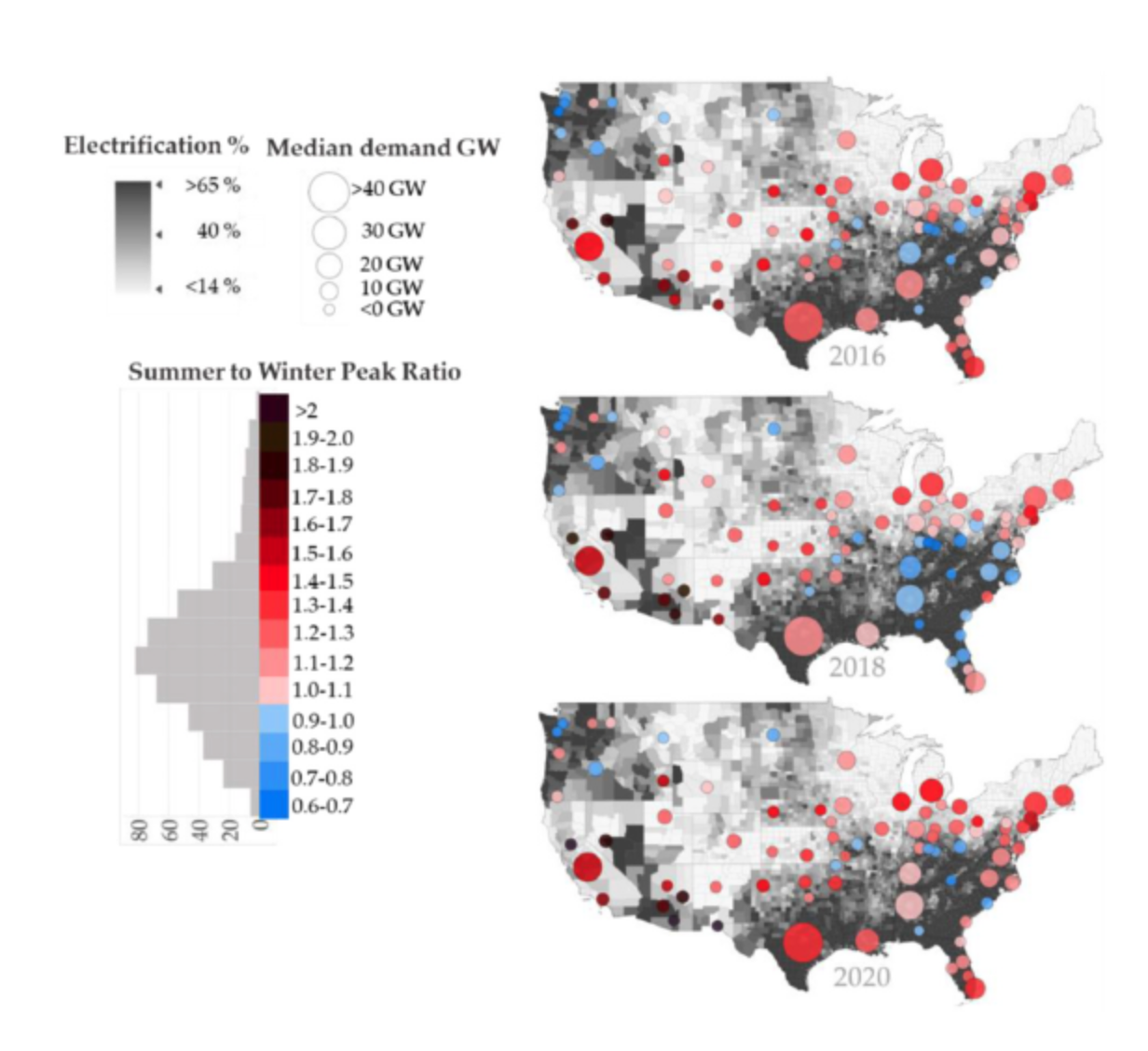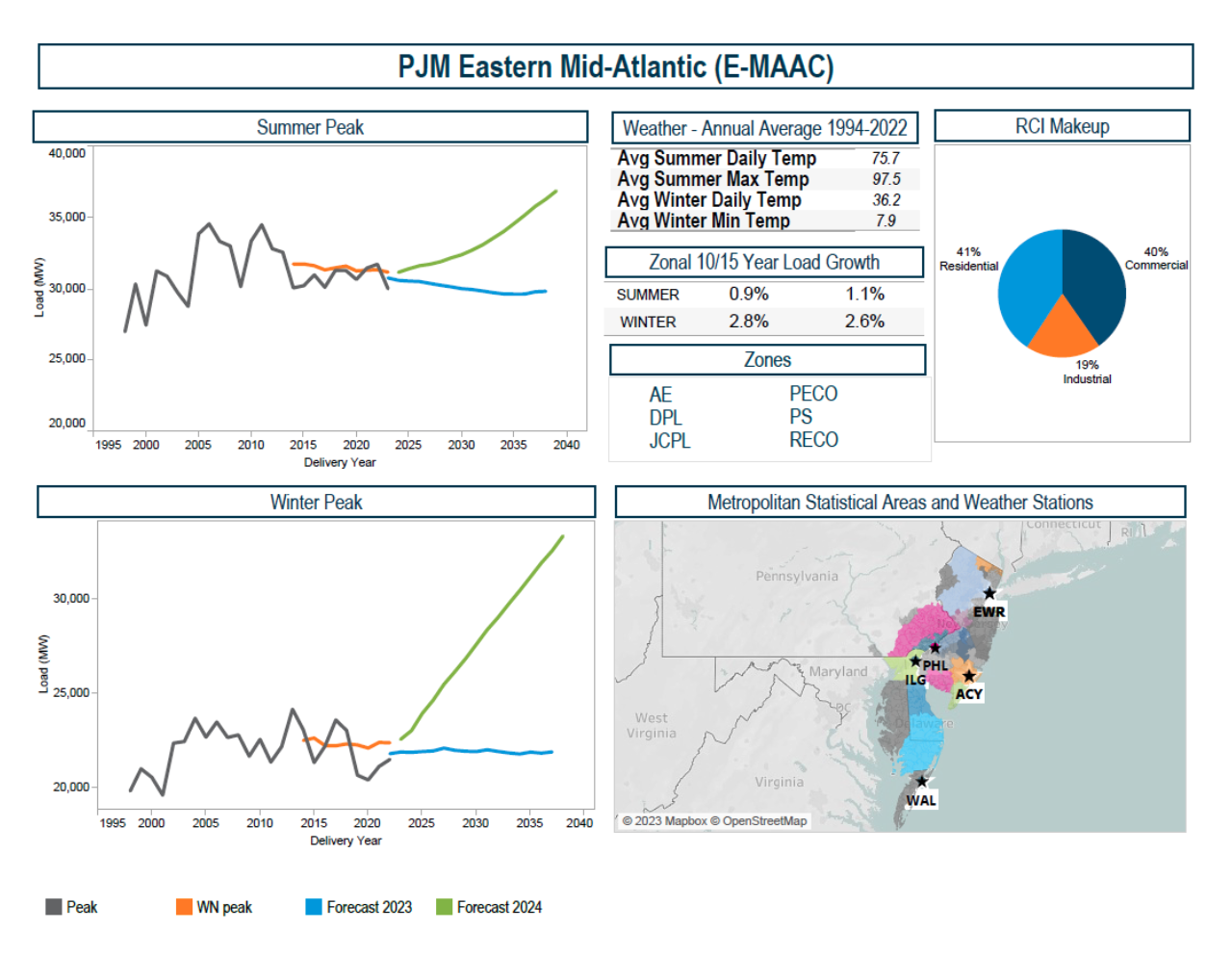It’s not a cold shoulder, but a winter’s peak
By Jeremiah Johnson
When should we expect the highest levels of electricity consumption? Could it be when lots of folks in the UK turn on their electric tea kettles at the start of the World Cup half time? Or maybe when Swifties boot up every electronic device they can find to get tickets for the Eras Tour? It might have seemed like it in my household, but the answer is often much simpler. In many regions in the United States, peak demand arrives on that hot summer day, when we all (gratefully) turn on our air conditioners. As a New Yorker who relocated to North Carolina, I’m a wimp when trying to survive a southern summer without a cool house.[1] These summer peaks can be taxing to our grid infrastructure and come at times when our thermal generation and transmission lines offer less capacity due to their high ambient temperatures. Talk about a cruel summer.
There are several U.S. regions, though, where there is an equal or greater peak demand that occurs at the other extreme – on that cold morning in the dead of winter. In an Energy Policy paper with Adi Keskar and Christopher Galik, I explored winter peaking trends and uncovered a few things that surprised me. First off, winter peaking is far more common than I expected. In 2018 – which was admittedly a banner year for winter power peaking – we found that one-third of our regions[2] had a higher winter peak than a summer peak. Many of these regions are up in the Northwest or down in the Southeast corners of the United States. Looking at the local ambient temperatures can tell you why this trend emerged. Many of these places have winters that are chilly enough to require some heating, but not so cold that electric heating is rare. Not too many Mainers or Michiganders heat their homes with electricity, but plenty of North Carolinians and Oregonians do.

Fig 1: Summer to winter peak ratio for 80 subregions in the United States. The county-level grey-scale shows the share of households with electricity as the primary heating source. (Adapted from Keskar et al., 2023)
And we are seeing upward revisions to our expected peak demand play out right now. PJM latest peak load forecast, released January 2024, sharply increases the peak demand forecast and shows markedly higher growth rates for the winter peaks.

A lot of power system planning focuses on meeting peak demand. How do we ensure that we have sufficient generation available when our electricity demand is at its highest? Investing in the infrastructure necessary to meet a growing peak electricity demand can be costly and drive up rates for customers. Building new generation capacity and expanding transmission takes time and money. The design of a power system that reliably meets a winter peak looks a bit different than a summer peaking system. Solar generation may be anemic or absent on that cold February morning and batteries’ performance can be impacted. And – as we saw unfold with Texas’s winter storm Uri – our natural gas infrastructure can freeze up, leading to cascading problems.
All of this, too, is playing out against a changing landscape of technologies. The growing success of electric heat pumps for space conditioning – while quite efficient – will further add demand on our grid during the coldest hours of the year. It remains to be seen, though, if this growth can outpace increasing air conditioner use, with both new adoption and record-setting climate-driven heatwaves. Electric vehicles are another wild card. Sales are robust – the key question is whether we can effectively incentivize charging outside of peak hours (in both summer and winter). I, for one, would be happy to avoid charging my car at these times, but I might need a reminder, or better yet, have this occur seamlessly in the background. As someone who thinks a lot about the power system and decarbonization, I still would appreciate it to require as little effort as possible.
Planning for a potential winter peak is a solvable problem, though. Some capacity markets are already bifurcated into summer and winter markets. Utilities can and should incorporate robust winter modeling into their integrated resource planning processes. It is essential, however, that these plans do not simply penalize renewable resources during winter peaks, but also recognize the higher failure rates of fossil infrastructure during extreme cold. Planning for winter peaking is not mutually exclusive with aggressive decarbonization efforts.
More information is needed on the potential of demand response to meet winter peaks. While summer demand response programs are more mature, we are still learning about the true potential for demand response solutions to a winter peak. An ACEEE white paper offers an optimistic view of the DR potential, finding that demand response via electric heating, strategic electric vehicle charging, and controllable water heaters could provide gigawatts of capacity to the Texas system. For this to be successful, though, people would need to give up a bit of control of their heating and hot water during those cold mornings. It may be tough to get volunteers. Broad-based efficiency measures – like good old insulation – can provide major reductions in winter electricity use, but historically many households have declined to install insulation, even when it may be cost effective.
This is a lot for energy system modelers to consider, but getting it right is important. New technologies with different electricity demand profiles. A changing climate driving different energy service demands. Extreme weather. Unpredictable (dare I say, sub-optimal) human behavior. I’m heartened by the work done in this space, however, and confident that we can offer meaningful insights as we navigate our path to a decarbonized energy system.

Looking for the winter peak of Burnt Mountain in Maine with my dog, December 2023.
[1] But you should see how cold it gets before I wear a jacket.
[2] We examined 80 regions, which included a combination of 41 balancing authorities, 20 sub-ISO areas in PJM, 13 sub-RTO areas in SPP, and 6 sub-ISO areas in MISO.